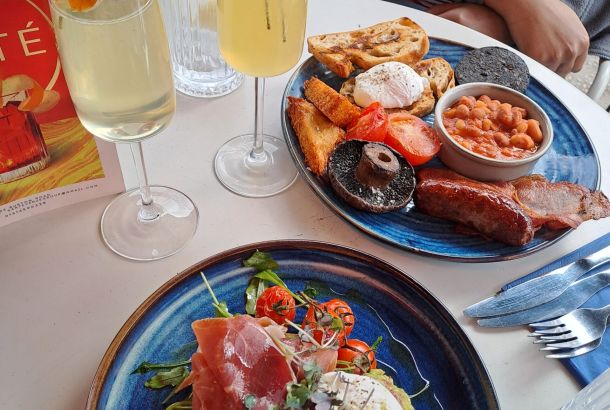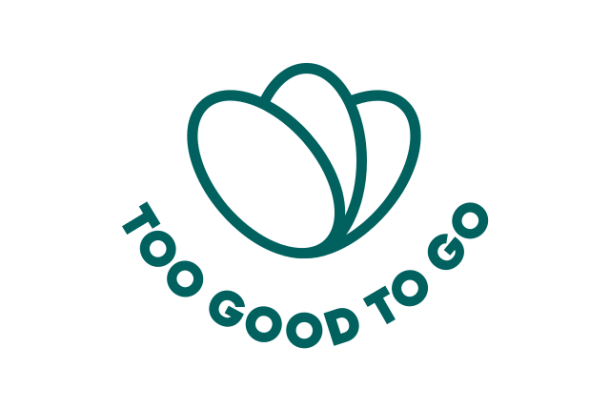Reclaiming Indian food from the white gaze

Chai tea lattes, golden lattes, Ayurvedic diets, Ghee and Ashwagandha, are all foods I see circulating in the media nowadays. India is home to the second largest population in the world, yet lately, it feels as though South Asia as a whole has been reduced to trends.
Over the past year, even those who don’t actively seek health fads would have probably been bombarded with golden lattes on their feed. There is also the rise of coconut oil and ghee in grocery stores and articles raving about ‘khichdi’ being a magical detoxing dish you need. Suddenly people who struggled to spell or even pronounce my six-letter name are spelling bee champions for the word Ashwagandha.
As a first-generation Indian immigrant, I always felt different and unrepresented. My parents, who grew up in India but immigrated for opportunities, always told me never to be embarrassed by our culture, a large part of which is rooted in food. A distinct memory I have from when I was younger is taking Idli with Podi (steamed rice cakes served with South Indian gunpowder) in my lunchbox, only to be ridiculed due to its unfamiliarity amongst my peers. I was so scared of being viewed as different, so I abandoned my culture and begged my mum to start packing me sandwiches like all the other children.
Now, these same foods that I was once teased for are trending globally. Growing up, I barely saw any representation of Indian food. It has become so mainstream that the growth has been incredible to watch.
Whilst this article is about food, even our practices are trending without crediting their origins. For example, we have been using oils like coconut oil in our hair for centuries, another element of my culture I was teased for when I was younger, but now both the practice of oiling hair and the ‘slicked back’ look have become popular trends.
The commercialisation of Indian food has undoubtedly increased its popularity and accessibility. This has led to the globalisation of Indian cuisine and the creation of new markets for Indian foods. However, it should be Indians benefiting from this globalisation. When somebody without knowledge of the culture attempts to pass off inauthentic Indian food as traditional, this results in the risk of erasing Indian culture. An example is the ‘masoor dal’ recipe from the New York Times. It blasphemously included sweet potatoes, which no Indian would welcome, and it becomes more tedious for somebody genuinely trying to learn an Indian recipe to distinguish between authentic and inauthentic.
This commercialisation then leads to the commodification of traditional Indian dishes. Many restaurants and food companies have altered classic Indian recipes to make them more appealing to Western palates, often sacrificing authenticity in the process. This has led to a loss of the original flavours and ingredients of traditional Indian dishes.
Ghee, an ingredient I grew up eating, is now considered a superfood. Khichdi, one of my childhood comfort meals, has been named a detox cleanse food by slender white women. They offer recipes no Indian would consider khichdi and, most importantly, fail to acknowledge the dish’s Indian origins.
Reversing the mindset of being embarrassed by the cultural foods deeply embedded in me for so long took and still takes a lot of active effort. This effort to feel love for the foods of a culture I have been taught to dismiss is what makes food so personal. The foods we were once teased for are now trending, and the same people that once would have ridiculed us are trying to capitalize on these trends and take our cultural food from us.
I read somewhere that, “reclaiming Indian food from the white gaze is vital to eradicate the risk of erasing Indian culture,” and this really resonated with me.
Another thing I have noticed is how the Western world has developed a new obsession with “plant-based” eating, which is where the newfound interest in Indian food and Ayurveda comes in. Indian cuisine is being recognised as inherently vegetarian and vegan. These are not simply trends for us, it has been our way of life for centuries. Growing up, it was evident that accommodating the girl who couldn’t eat the cheeseburger at barbecues only increased the workload. Now, there seems to be constant hype surrounding the release of new plant-based alternatives. The teachings of Ayurveda revolve around viewing food as medicine. However, the Western world does not have a sound understanding of this and continues to abuse the diet by reducing it to turmeric shots.
Growing up, something I heard consistently whenever I went to my non-Indian friends’ houses was how Indian food was challenging to digest and had a potent “smell”. These comments develop complexes and insecurities in people of colour regarding their food. While we are proud, we are also made to feel embarrassed at times.
Obviously, the one food everybody assumed my diet revolved around is curry, which is a separate conversation in itself because, as an Indian, what even is curry? It has become such an umbrella term. Regardless, people are always surprised when I explain that this is not the case.
To address these preconceived notions about Indian food being challenging to digest, turmeric is a prevalent ingredient in Indian food used throughout almost all dishes. Nowadays, turmeric is trending, and people are raving about its health benefits and how it helps aid digestion. It’s so interesting to see the perspective change towards the same food that people once deemed “too exotic” or “stinky” as a superfood that promotes good health, simply because the western world decided to say so. Endorsement by other white people shifted the Western world’s perspective on Indian food from difficult-to-digest takeout to detox and immunity-strengthening food. The realisation then dawned on me, maybe while people are interested in our food, they don’t want to see it advertised or taught by us.
I’ve been to so many cafes that serve turmeric lattes, golden lattes or golden milk. This is a blatant example of cultural appropriation as, for centuries, we have been drinking these as remedies across almost every Indian household. Growing up, I knew it as ‘haldi doodh’ in Hindi or ‘manjal milagu paal’ in Tamil, both literally translating to turmeric milk. I would classify it as an Indian drink that has only recently garnered popularity in the western world.
Before the rise of golden lattes, in 1995, two researchers from the University of Mississippi were granted a patent for “the use of turmeric for wound healing.” Turmeric has been domesticated in South Asia, and it has long been a staple across South Asian households. Turmeric is so predominant that when I was getting braces, my dentist confidently told me to opt for clear brackets. “Foods that don’t stain easily outweigh foods that do,” the dentist said. Mine were stained yellow by my mum’s ‘tadka dal’ (lentil stew) the very same week. So, of course, India’s Council of Scientific and Industrial Research (CSIR) challenged the patent, and thankfully, it was revoked in 1997.
The Western world has also recently been obsessed with zero waste as a trend. The Indian culinary scene has been inherently zero waste for centuries. In fact, my mum laughed when I excitedly told her I wanted to visit the new zero-waste shop that opened back home. I wanted to try the bulk bins and buy a new steel lunchbox. “These are things we used growing up,” she smiled, “and now you want to pay twice the price for a steel lunch box”. Something I very strongly resisted when I was younger because everybody else had a plastic lunchbox.
In South India, where I originate from, we eat meals on banana leaves with our hands. There is a whole system in place. First, food is served and enjoyed from a banana leaf which mimics the plate. Then the banana leaves are either composted or fed to cows (found in abundance and highly respected in India). As I mentioned before, since most of our food is inherently vegetarian, it quickly decomposes into the soil. If this type of meal were served in a restaurant with a white front, people would promptly pay extortionate prices for what we consider a very typical experience.
I do want to emphasise that I am happy that our foods and cooking techniques are gaining recognition. However, I believe that credit should be given where it is due. Our foods should be recognised as South Asian and acknowledged as a part of South Asian culture. While I recognise it is a process, the only way to see change is if we take the first step and decolonise our minds to see South Asian food for what it truly is.







